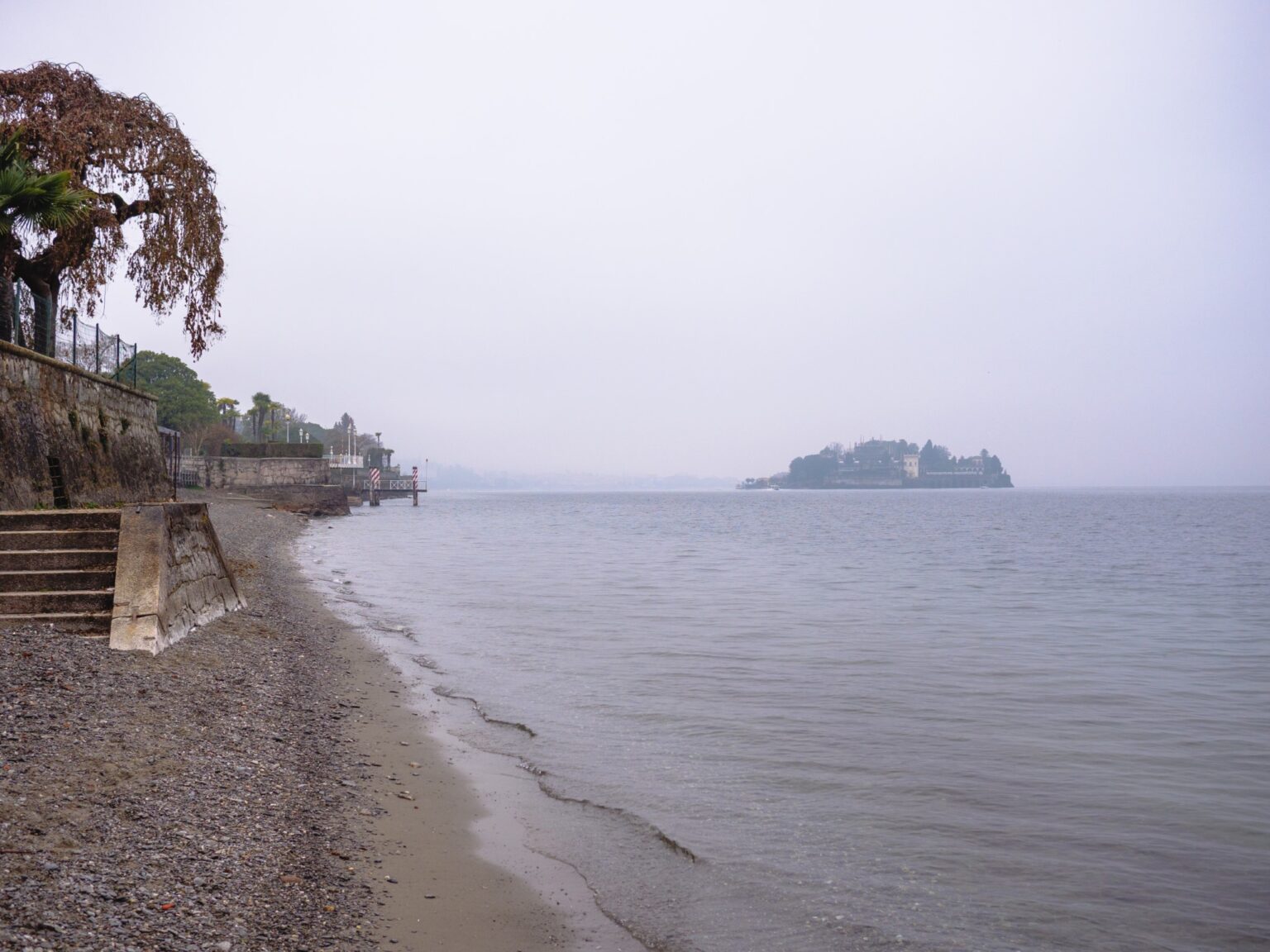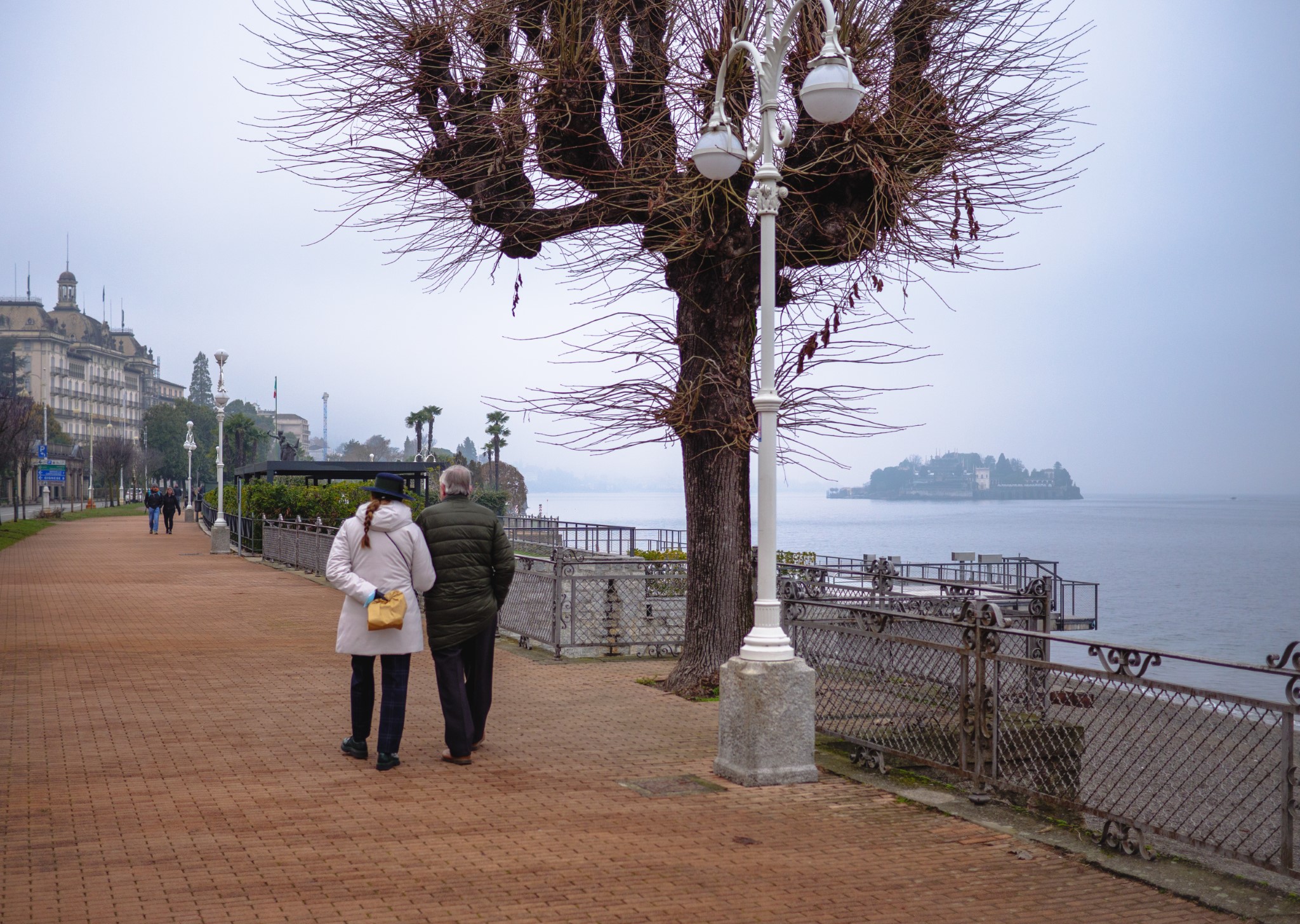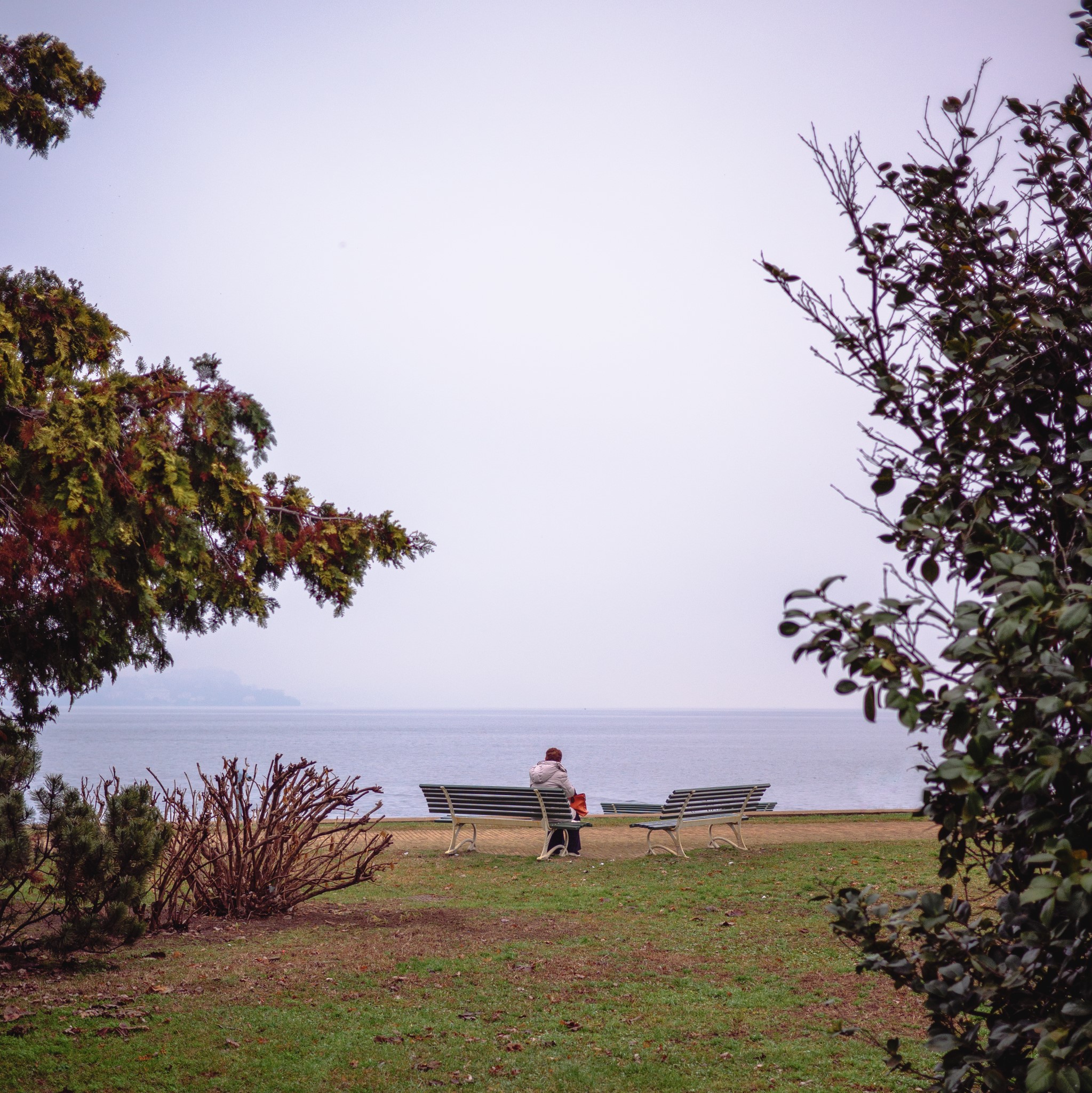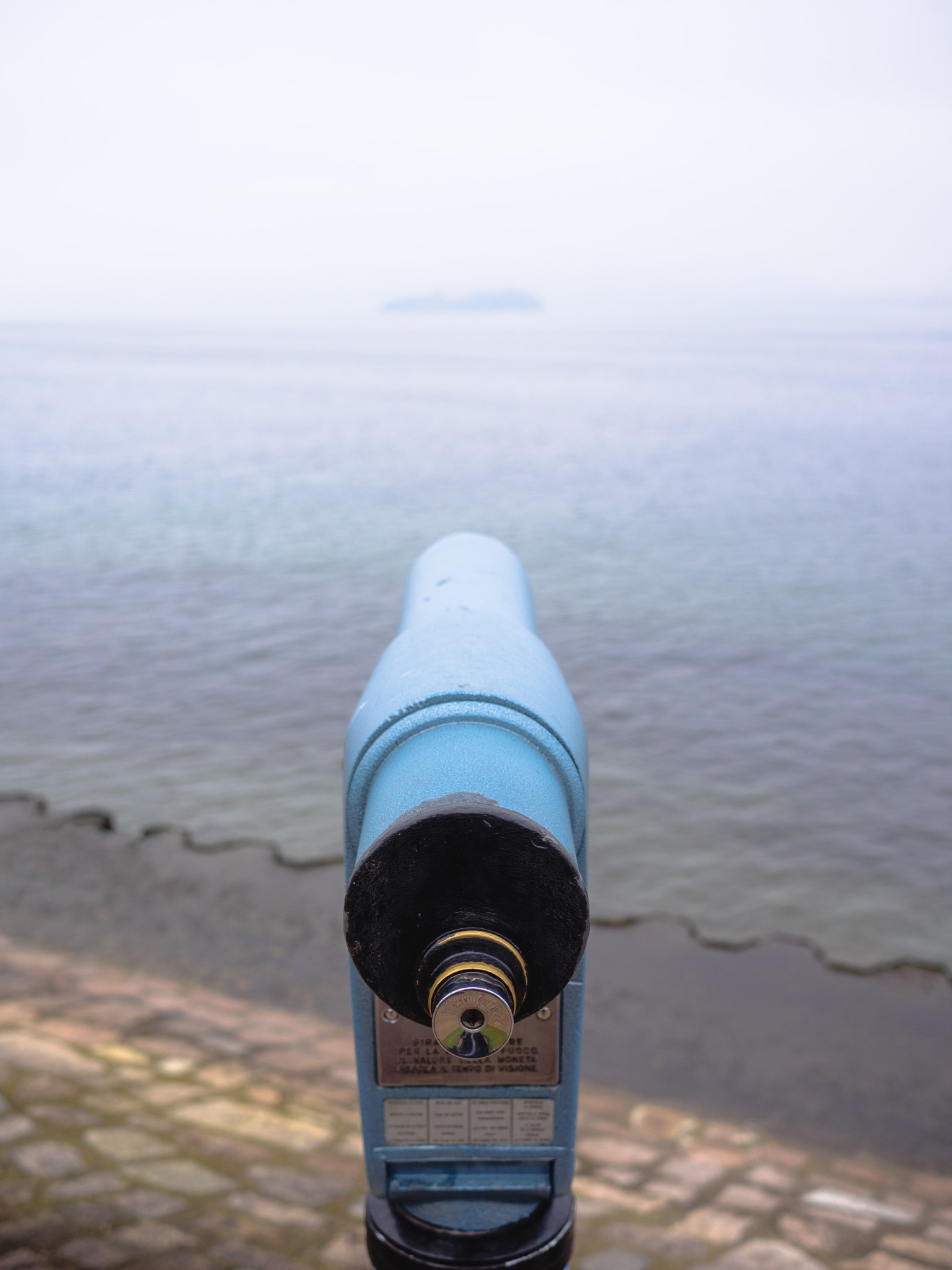A while back I tried to do an interesting excercise: telling a story with a small set of images.
It happened that we were having a walk in Stresa, Piedmont, Italy, a nice lakeside town on Lake Maggiore. Let’s see what I came up with.
Establishing Shot

The first photograph is an establishing shot. It gives you an idea about the overall location, setting and conditions.
We are on the sea, or maybe a lake. There is an island. The weather is grey and the water is calm so, yes, maybe it’s in fact a lake. I wonder what’s up there on the left, near that tree. Where do those stairs lead to? Can I take a boat to the island?
You see, all these questions are good, because they engage the viewer and make them want to explore more images (at least, that’s the idea).
Subject Shots


The next are subject shots. They show specific subjects that you can find on location. Subjects can be people, animals, cars… anything that you decide it’s a subject.
I can see there are people around, walking or sitting on benches. The place is not very crowded – maybe for the dull weather, or maybe simply because it’s like that. I cannot know. I see buildings on the left side of the first image, so I guess this is a town.
Yet again, not giving away all the details is key, because as humans we especially like to fill the blanks with our own ideas, memories and experiences. This makes us feel more connected with the images.

Another subject shot.
I am so close to this group. Is it a family? Maybe. What is the lad looking at? Does the telescope require a coin to use it?
Detail Shot

This is a detail shot. It gives the viewer a bit more info on something that you can find on location. It’s not a subject, at least not in the contest of the story we’re telling, but some item that adds to that and gives a bit more information.
Now I know what the lad in the previous photo was looking at. I don’t quite see it, but I’m positive it’s the island in the distance. Maybe it’s the same I saw in the very first picture. Are there more islands?
More Shot Types
I think this story works well as it is, with just five images, but there are a couple more shots that I could have added.
- Transition shots: they convey the fact that we are changing location or otherwise moving. There was no need for this type of image in my story.
- Hero shot: usually just one, it’s the grand finale, the payoff to the story. I would have liked to include it, but I couldn’t find any composition that would work in this direction without being repetitive.
Mini Projects
I think that trying to tell a story is an excellent mini-project to work on. It gives a sense of accomplishment and closure even if the location or conditions are not very interesting and it can be completed in a short amount of time.
It also works pretty much anywhere in the world and with any type of subject.
